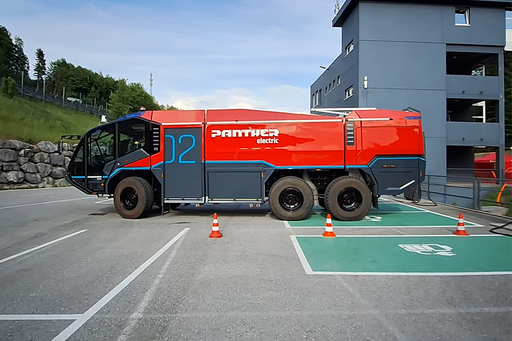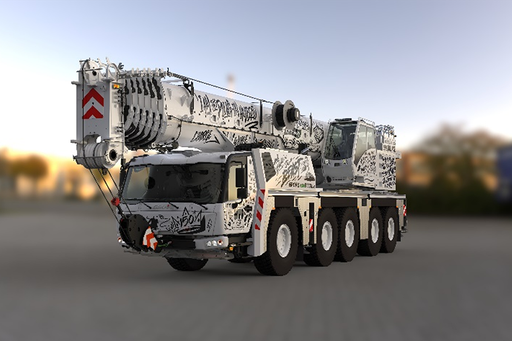eXact – Electrification of the next generation of construction machinery

Objective
In the eXact project, students from ETH Zurich, OST – Eastern Switzerland University of Applied Sciences, and the University of Applied Sciences Northwestern Switzerland, in collaboration with SUNCAR AG, Volvo Construction Equipment, Ewellix, and other partners, developed a next-generation construction machine over the past five years.
The goal was to make the existing Volvo ECR25 Electric compact excavator more efficient, productive, and sustainable through targeted system innovations. As a first step, hydraulic components that cause significant energy losses were to be replaced with electric linear actuators. At the same time, automation, safety, and operator comfort were to be increased. In a further step, the excavator's last main hydraulic function, the swing drive, was added. The aim was to convert this to a direct electric drive in order to completely replace the hydraulic pump and further increase energy efficiency.
Technical Implementation
- Drives: The three main cylinders (boom, stick, and bucket) were replaced by high-performance electric linear actuators. These drives, based on ball screws, enable precise, low-loss power transmission. Challenges included integrating motors, gearboxes, and cooling systems within a limited installation space, as well as providing protection against dust and impacts on the construction site.
- Controls: The control system was completely redesigned. All actuators, sensors, and safety functions are networked via a central control unit. Communication takes place via CAN bus networks, and emergency shutdowns ensure maximum operational safety.
- Artificial Intelligence: An augmented reality system visualizes data such as position, tilt, and working area for the machine operator in real time. A custom-developed application also enables wireless data transmission and condition monitoring.
For the direct electric slewing drive, the Volvo ECR25's basic hydraulic system was first measured and analyzed to determine the required torque, moments of inertia, and energy consumption.
Based on this, a compact electric motor with an integrated planetary gearbox and brake was selected. Electrical integration was achieved via an inverter and the existing control system.
Results
In the original Volvo ECR25 Electric, a central electric motor generated the hydraulic pressure for all actuators – an approach that resulted in significant losses, particularly due to pump idling and throttling losses. Switching to electric direct drives significantly reduced energy consumption.
The project also made it possible to recover kinetic and potential energy during braking and feed it back into the battery by using electric drives. This regenerative braking function leads to a significant increase in overall efficiency, as previously unused kinetic energy is reused. By combining the higher efficiency of the electric drives with the additional recuperation capability, the energy consumption of the swing drive was reduced by almost 90%. Furthermore, digital control enabled an increase in the maximum swing speed of approximately 30%.
Depending on the application scenario, the efficiency increase of the excavator arm with electric linear actuators ranged from 30% to 80%. The efficiency is highly dependent on the specific task: When digging in hard ground, the efficiency gain is less pronounced, while it is significantly higher for tasks with lighter loads – for example, grading. This is due to the system's demand-based energy consumption with linear actuators: Unlike hydraulic systems, where the pump runs continuously, the electric system only draws the energy that is actually needed.
The combined system of electric linear and slewing drives confirms the potential of fully electric construction machinery:
- Significantly increased efficiency due to the elimination of hydraulic losses
- More precise movements and reproducible control
- Improved occupational safety thanks to integrated emergency stop and sensor monitoring
- Innovative user guidance through augmented reality-based display
Comparative measurements conducted as part of efficiency tests between hydraulic and electric systems yielded the following results:
- 86,8 % lower energy consumption per 10-minute swing cycle (254 Wh → 33 Wh)
- 89 % less energy per cycle
- 25 % more work cycles in the same timeframe
- Significantly improved controllability and reduced noise
Conclusion & Outlook
The eXact project demonstrates that the complete electrification of an excavator's operating functions is technically feasible and energy-efficient. The project also showed that a fully electric swing drive for compact construction machinery is technically feasible and enables enormous efficiency gains. The result is a virtually hydraulic-free, fully electric excavator with significantly improved energy consumption, controllability, and sustainability.
Future work will focus on durability, robustness, and the further development of the control system, ultimately leading to semi-autonomous applications.
Project Partners
ETH Zurich – Department of Mechanical and Process Engineering (MAVT)
OST – Eastern Switzerland University of Applied Sciences
FH Northwestern Switzerland – School of Engineering
SUNCAR AG – Technical Support and Integration
Volvo Construction Equipment – Machine Base and Test Support
Ewellix – Linear Actuator



